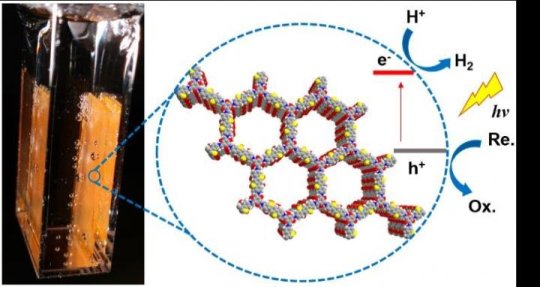[ad_1]
Scientists from the University of Liverpool, University College London and East China University of Science and Technology have synthesized a new organic material that can convert water into hydrogen fuel using sunlight.
Photocatalytic solar hydrogen production — or water splitting — offers an abundant clean energy source, but only if the energy in sunlight can be harvested effectively. Inorganic materials are better known as water splitting catalysts, but organic catalysts can also be built from cheap abundant elements, such as carbon, nitrogen, and sulphur.
The Liverpool-led team has used a combination of experiment and computation to discover a highly active organic photocatalyst. This also revealed some basic design principles, which may guide us to even better catalysts in the future.
Mr Xiaoyan Wang, the Liverpool Chemistry PhD student who led the experimental work, said: “To achieve high hydrogen evolution rates, you need good water affinity, broad light adsorption, high surface area, and high crystallinity. By introducing all of these features in one material, we got a very active photocatalyst.”
Story Source:
Materials provided by University of Liverpool. Note: Content may be edited for style and length.
[ad_2]















